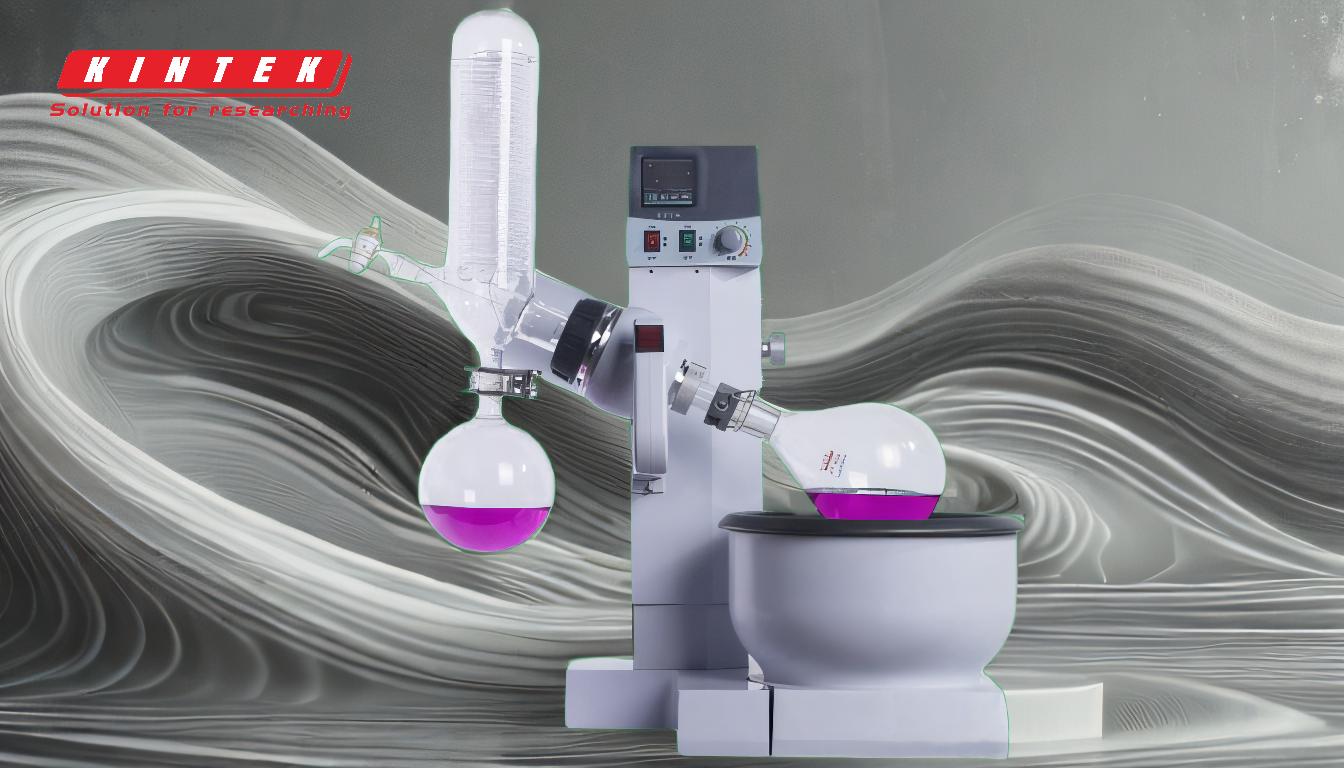A solvent trap in a rotary evaporator is a critical component designed to capture and condense solvent vapors during the evaporation process. It ensures that the solvent is safely collected and prevents it from escaping into the environment or contaminating the vacuum pump. The solvent trap works in conjunction with the vacuum system, condenser, and receiving flask to maintain a controlled and efficient evaporation process. By trapping the solvent, it also helps in recovering valuable solvents for reuse, reducing waste, and ensuring the purity of the final product. Below, the key aspects of the solvent trap are explained in detail.
Key Points Explained:

-
Purpose of the Solvent Trap:
- The solvent trap is designed to capture solvent vapors that evaporate from the sample during the rotary evaporation process.
- It prevents the solvent from entering the vacuum pump, which could damage the pump or contaminate the system.
- By condensing the solvent vapors, the trap ensures that the solvent is collected for reuse or proper disposal, enhancing the efficiency and sustainability of the process.
-
How the Solvent Trap Works:
- As the solvent evaporates from the rotating flask, it travels through the system as vapor.
- The solvent trap, typically located between the evaporation flask and the vacuum pump, intercepts these vapors.
- The vapors are cooled and condensed back into liquid form within the trap, where they are collected in a dedicated container or flask.
- This process ensures that only non-condensable gases (if any) pass through to the vacuum pump.
-
Integration with the Rotary Evaporator System:
- The solvent trap is an integral part of the rotary evaporator's vacuum system.
- It works alongside the condenser, which cools and condenses the majority of the solvent vapors, and the receiving flask, which collects the condensed solvent.
- The trap acts as a secondary safety measure, capturing any solvent vapors that might bypass the condenser.
-
Importance of the Solvent Trap:
- Protection of the Vacuum Pump: Solvents can damage vacuum pumps by corroding internal components or causing mechanical failures. The solvent trap prevents this by capturing solvent vapors before they reach the pump.
- Environmental Safety: By trapping solvents, the system prevents the release of harmful vapors into the laboratory environment, ensuring compliance with safety and environmental regulations.
- Solvent Recovery: The trap allows for the collection and reuse of solvents, reducing costs and minimizing waste.
- Process Efficiency: A well-functioning solvent trap ensures that the vacuum system operates smoothly, maintaining consistent pressure and improving the overall efficiency of the evaporation process.
-
Types of Solvent Traps:
- Cold Traps: These use a cooling medium (such as dry ice or liquid nitrogen) to condense solvent vapors. They are highly effective for trapping volatile solvents.
- Chemical Traps: These contain absorbent materials that chemically react with or absorb solvent vapors. They are useful for specific solvents or when cooling is not feasible.
- Mechanical Traps: These rely on physical barriers or filters to capture solvent vapors. They are less common but can be used in certain applications.
-
Maintenance and Considerations:
- Regular cleaning and maintenance of the solvent trap are essential to ensure its effectiveness.
- The choice of solvent trap depends on the type of solvent being evaporated and the specific requirements of the process.
- Proper installation and connection to the vacuum system are critical to prevent leaks and ensure optimal performance.
In summary, the solvent trap is a vital component of a rotary evaporator, ensuring the safe and efficient capture of solvent vapors. It protects the vacuum pump, enhances environmental safety, and supports solvent recovery, making it indispensable in laboratory and industrial applications.
Summary Table:
| Key Aspect | Details |
|---|---|
| Purpose | Captures solvent vapors, protects vacuum pump, and enables solvent recovery. |
| How It Works | Condenses solvent vapors into liquid form for collection. |
| Integration | Works with condenser, vacuum system, and receiving flask. |
| Importance | Protects equipment, ensures safety, and improves process efficiency. |
| Types | Cold traps, chemical traps, and mechanical traps. |
| Maintenance | Regular cleaning and proper installation are critical. |
Need a reliable solvent trap for your rotary evaporator? Contact our experts today to find the perfect solution!











